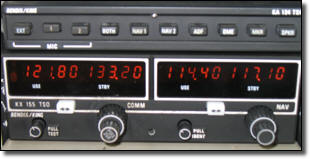Subscriber question:
"What do you do if, during read back on the ground, the transmissions between the controller and you start breaking up or go dead. Can you take off, hoping some altitude will correct the situation?" - Anonymous
Wally:
“So, let’s see, you have been talking to a remotely located controller while on the ground, but then the signal breaks up and finally goes dead. Since we could talk to him at one time, that would indicate that you do have slant range coverage at your location. Unless they moved the tower while you were talking, you should still have slant range. In this case, taking off hoping that slant range was the problem did not work.
 What other clues might be in the radio calls breaking up and or going dead? Well, the radio needs electricity to work. Many of our G/A radios are very sensitive to low or not enough voltage, so often they are the first indicator of an electrical problem with the aircraft.
What other clues might be in the radio calls breaking up and or going dead? Well, the radio needs electricity to work. Many of our G/A radios are very sensitive to low or not enough voltage, so often they are the first indicator of an electrical problem with the aircraft.
If we happen to have a high electrical demand such as landing lights on, pitot heat on or low RPM, that can cause the voltage to drop enough to effect the radios. You can try reducing the electrical load to see if that helps. A check of the ammeter or other electrical information may help diagnose this problem. If the alternator/generator has failed or malfunctioned, it will often show up as a radio problem if not detected sooner by the ammeter or voltage indications.
The concept of fixing a broken airplane by flying it is not a good one and usually doesn’t work. I am aware of a flight instructor who had a near fatal accident because he decided to check out a student’s complaint about a rough running engine in the trainer. On take off he had an engine failure at about 300 feet, crashed and the airplane caught fire. The flight instructor was seriously injured.
So, taking a malfunctioning airplane in the air to fix it is not only a violation of the FAR’s, but just a bad idea. Thanks very much to the contributor for helping us all learn from this experience.”
